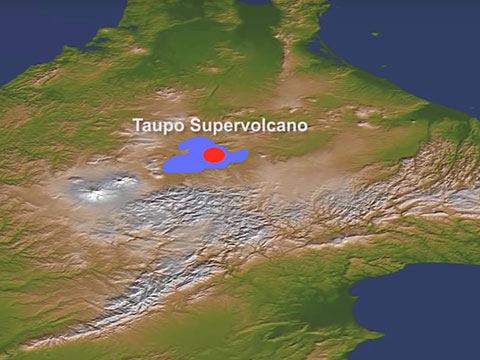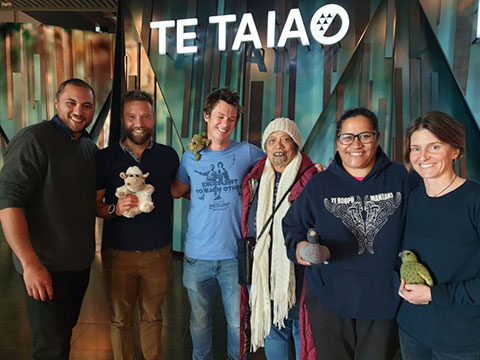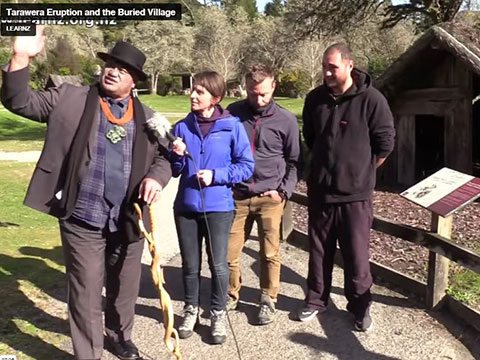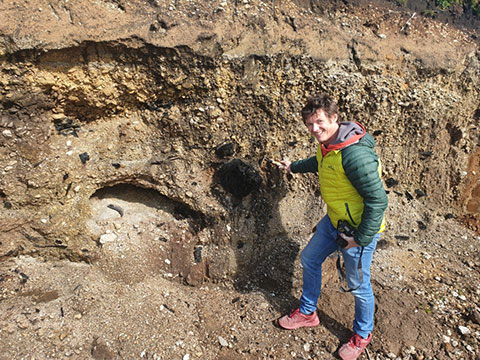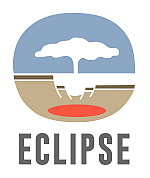Explore the science and stories of our Taupō supervolcano.
Discover more >
Background reading, images, narrations, keywords and quizzes.
Connect with experts >
Insights into people and their careers, and replay live web conferences as podcasts.
Explore the field trip videos >
Videos and more showcasing places, people, ideas and initiatives on this field trip.
Take a journey around the Taupō supervolcano
A diary of the journey over a supervolcano.
About this trip
About 25,500 years ago the Taupō supervolcano erupted from a massive pool of magma about 5km below the ground surface. When most of the magma had been erupted, the ground above it collapsed and left a massive depression in the middle of the North Island. It slowly filled with water, becoming Lake Taupō.
New Zealand has the world’s most frequently active supervolcano system. The central Taupō Volcanic Zone (TVZ) has two recently active volcanic centres, Taupō and Okataina. Every few decades this zone experiences unrest and every few hundred years it erupts. These eruptions can be very small and short lived, or more rarely, enormous on a global scale.
For scientists deciding if unrest will lead to an eruption and estimating the timing and impacts of any future eruptions are huge challenges. During this field trip you will follow the historic journey of high priest tohunga Ngātoroirangi south from Maketū to Tongariro, visiting sites significant to local iwi. Mātauranga Māori and science together can help us to understand how our supervolcano works and what we need to do to prepare for an eruption.
This online field trip supports a STEAM-based, cross curricular approach to teaching and learning. Participation encourages curiosity, citizen-science and student inquiry. Access the glossary and the Class Ambassadors.
![]() This trip reflects the United Nations Sustainable Development Goals (SDGs), especially Goal 11: Sustainable Cities and Communities: Make cities and human settlements inclusive, safe, resilient and sustainable.
This trip reflects the United Nations Sustainable Development Goals (SDGs), especially Goal 11: Sustainable Cities and Communities: Make cities and human settlements inclusive, safe, resilient and sustainable.

